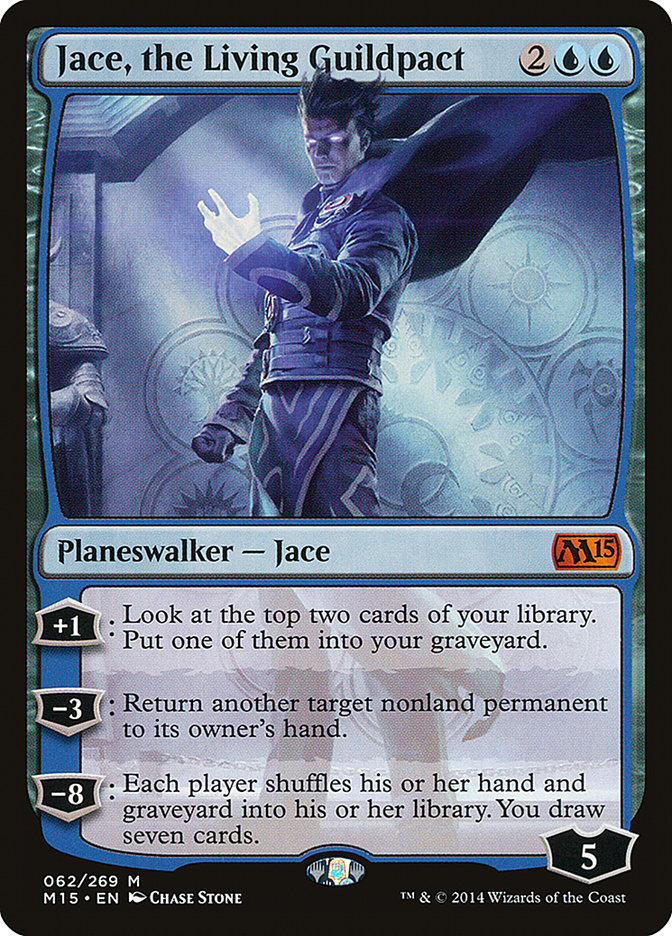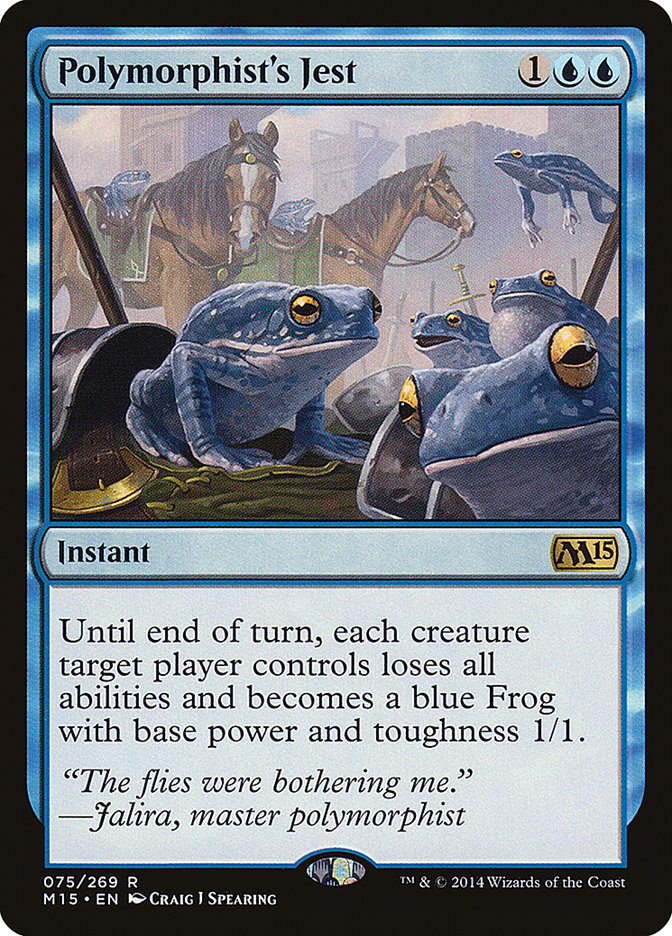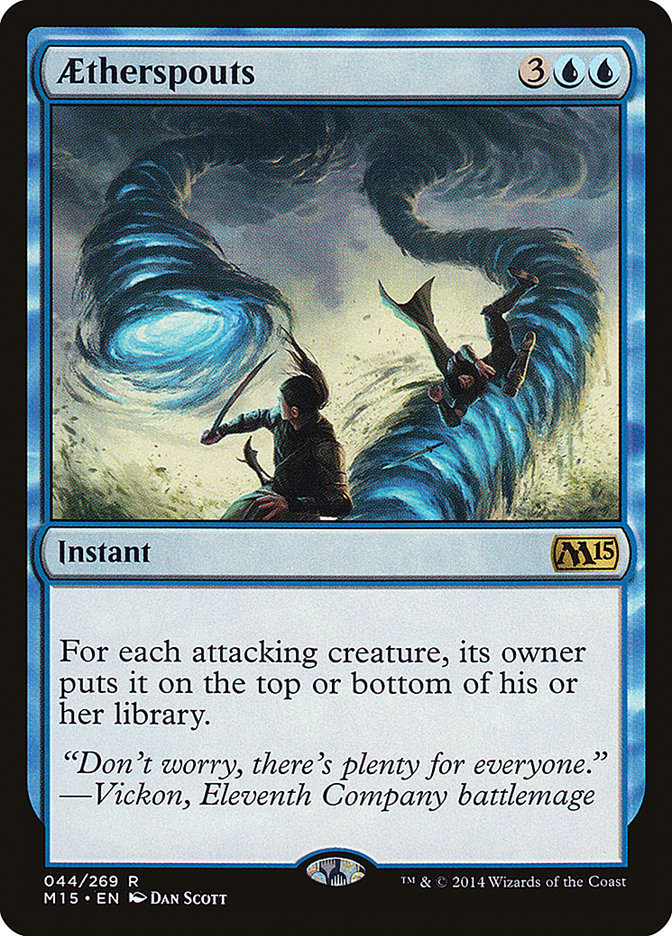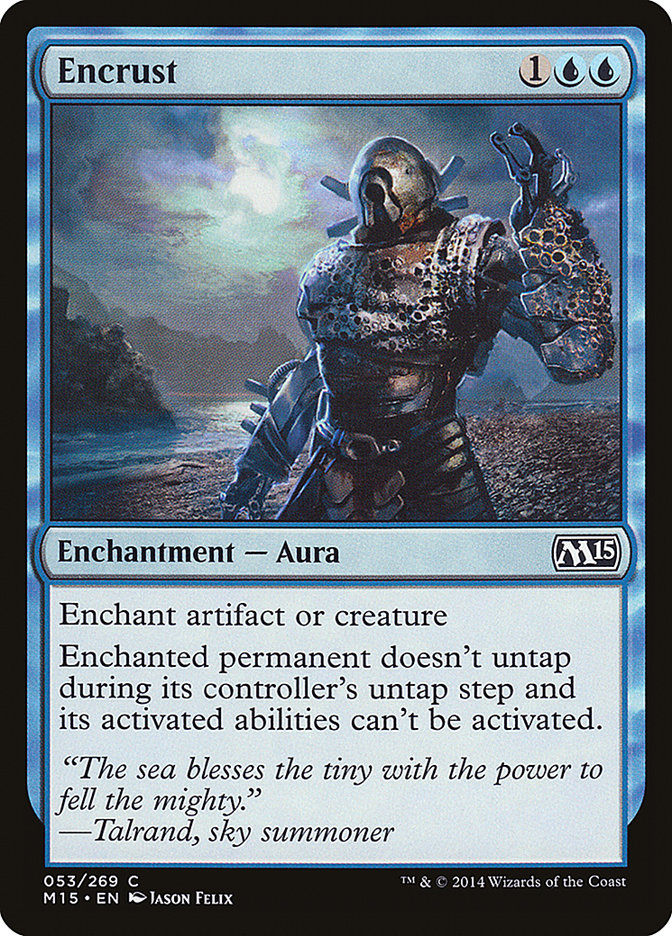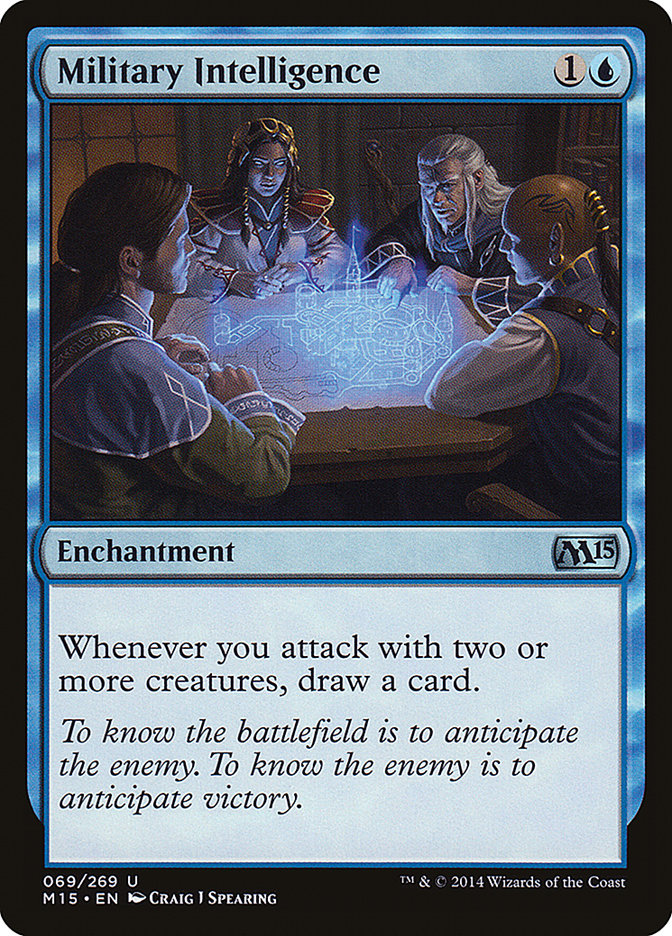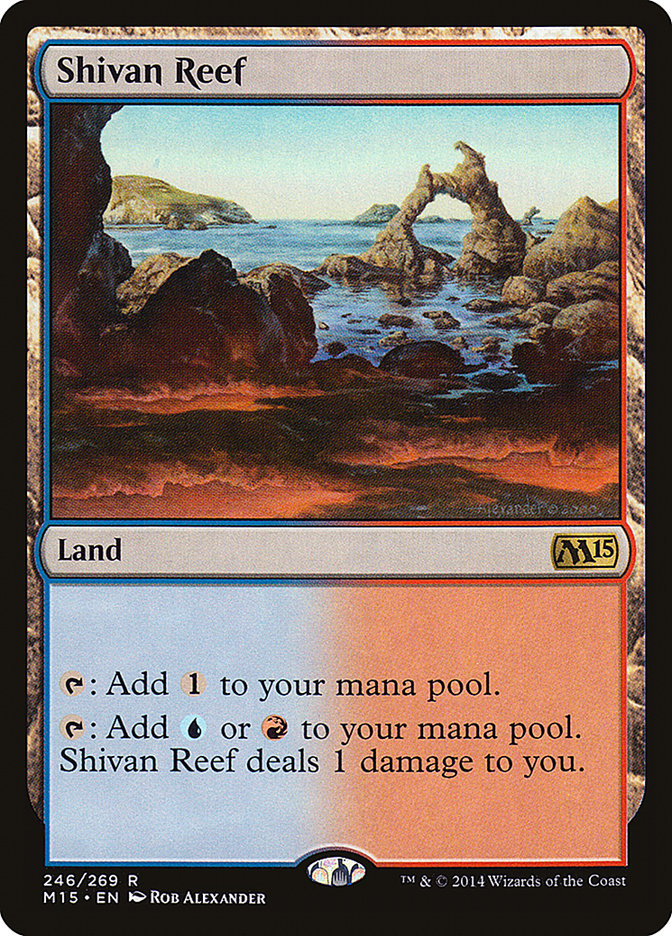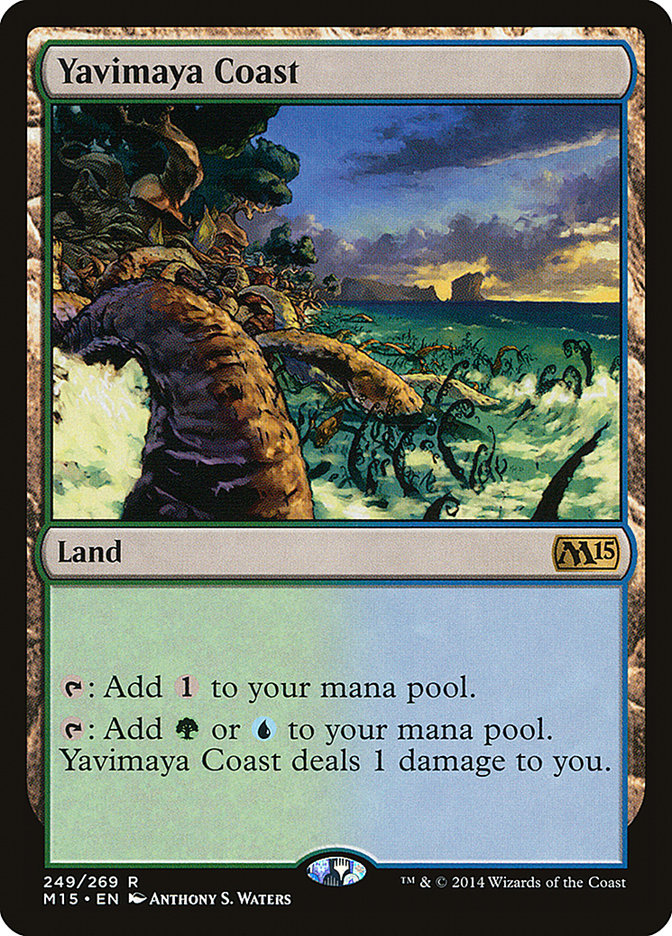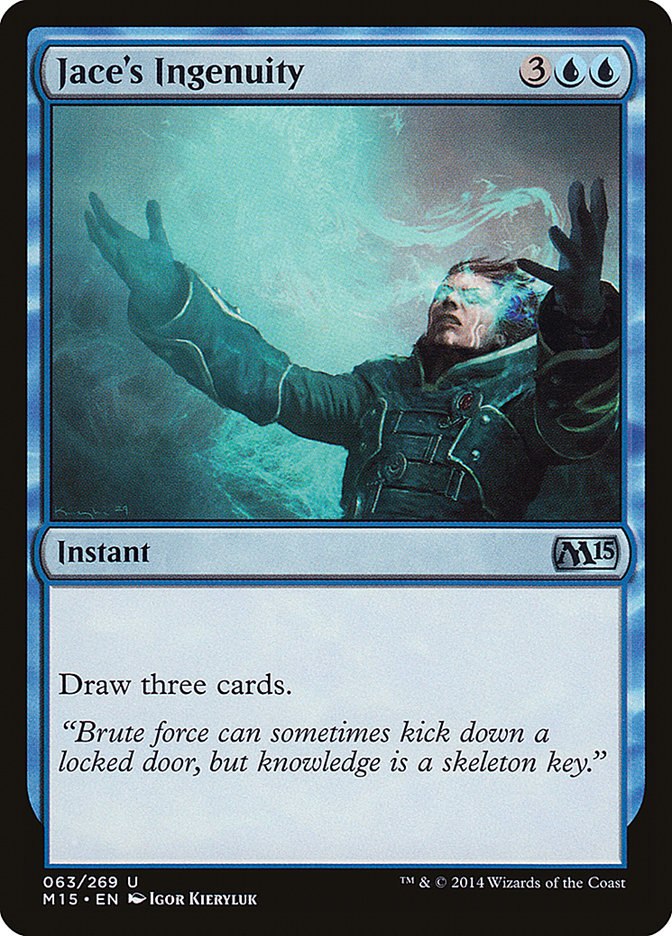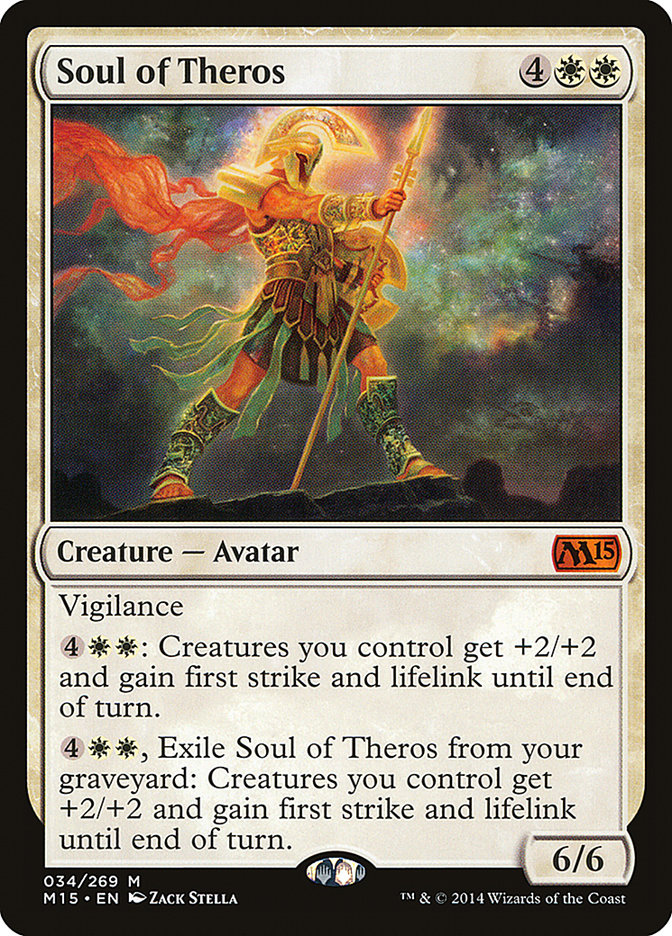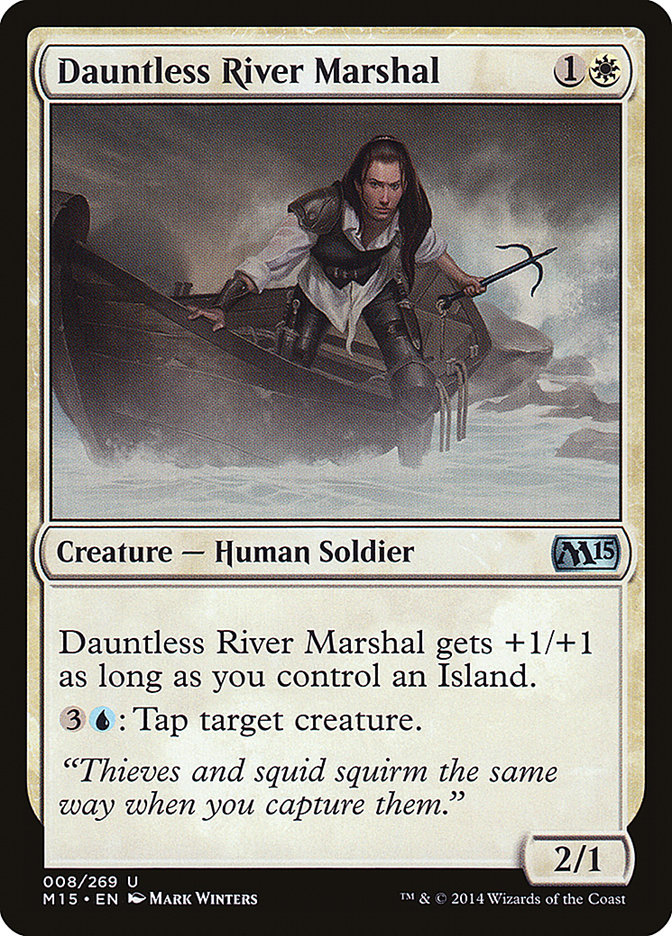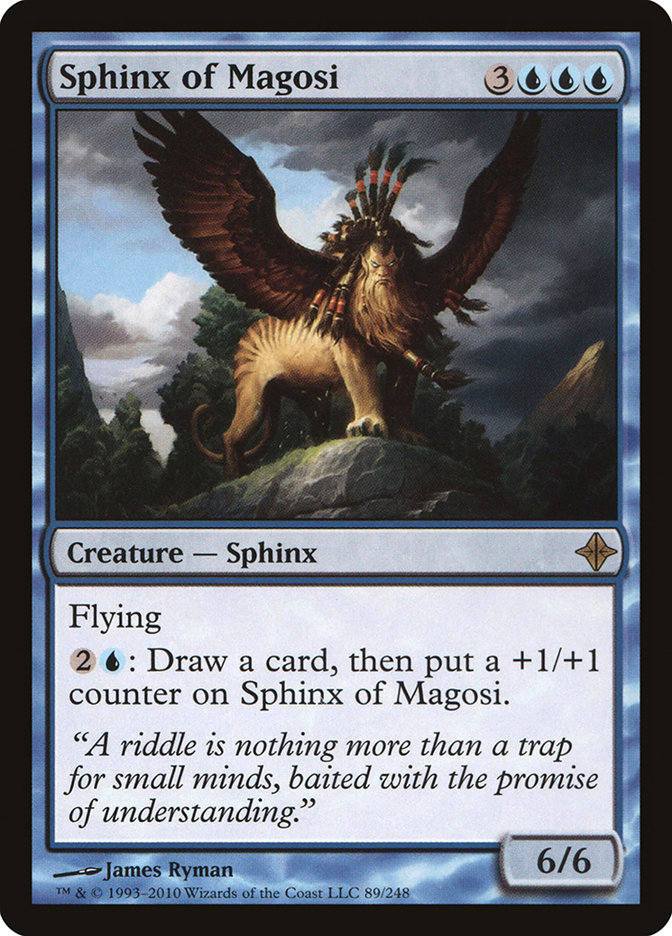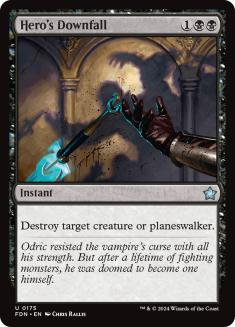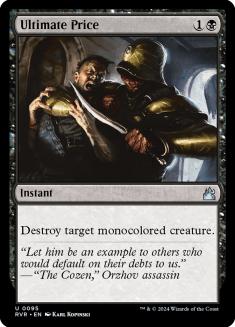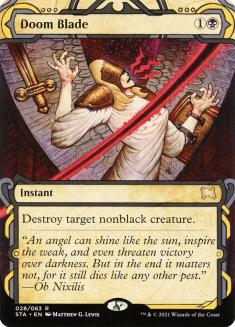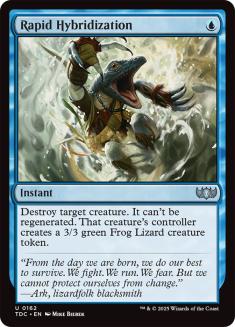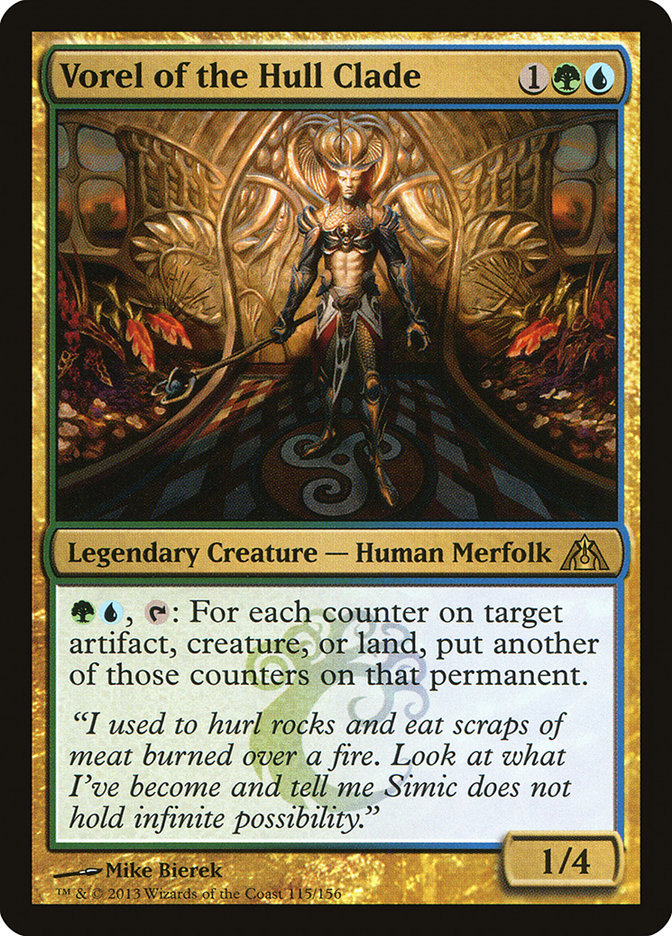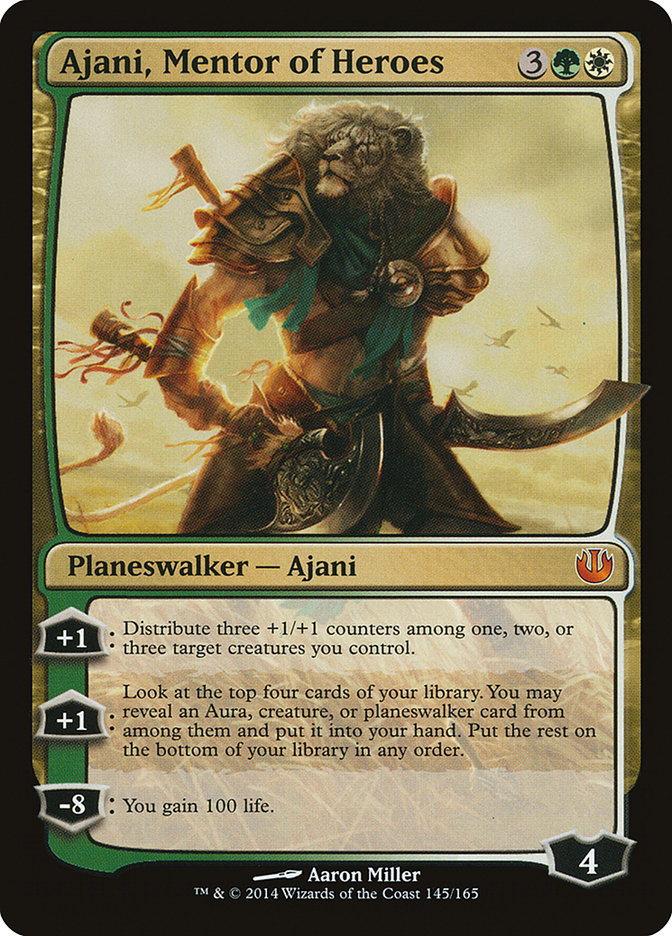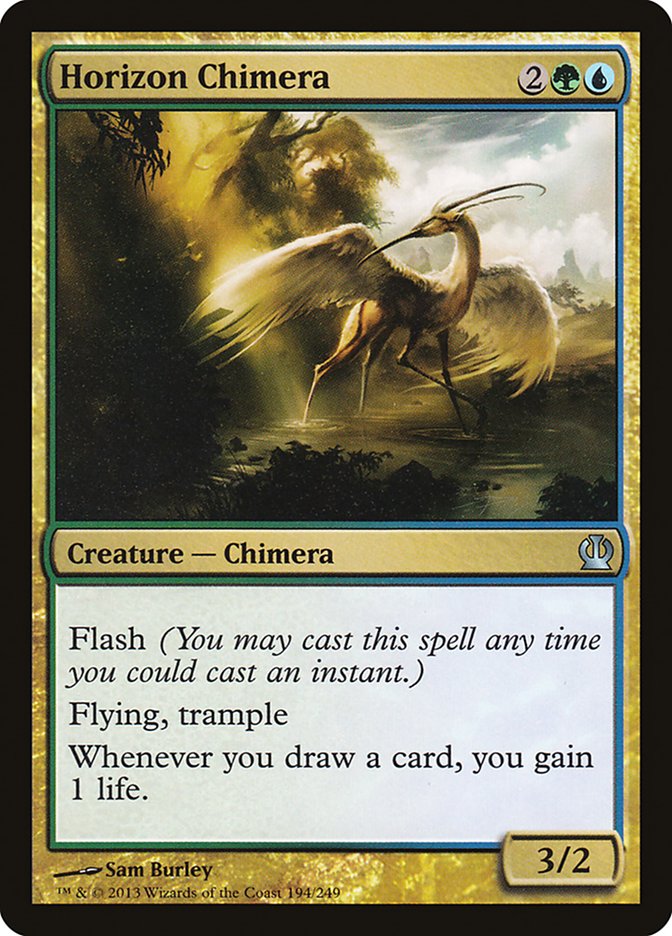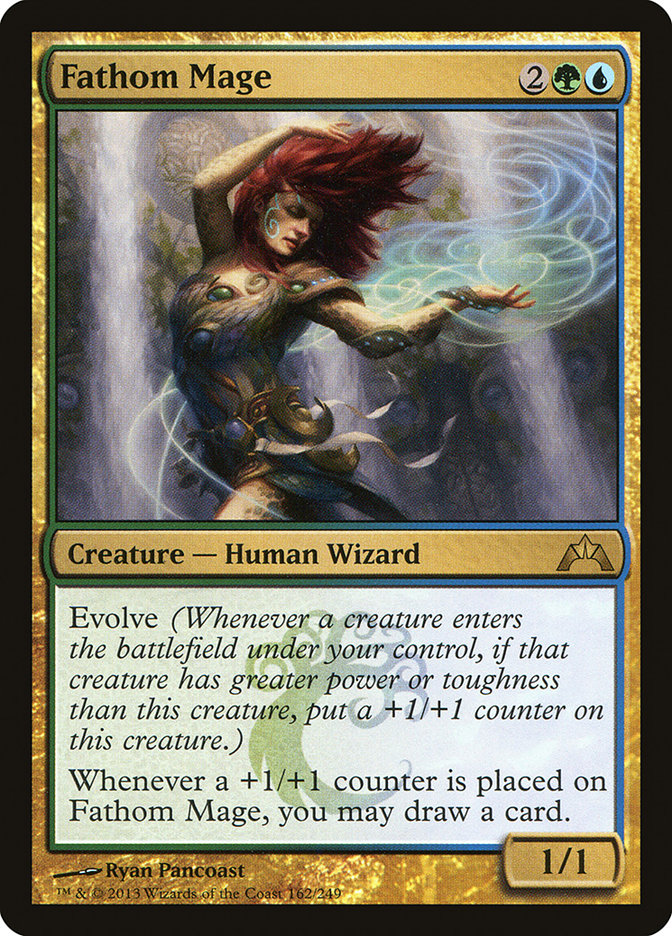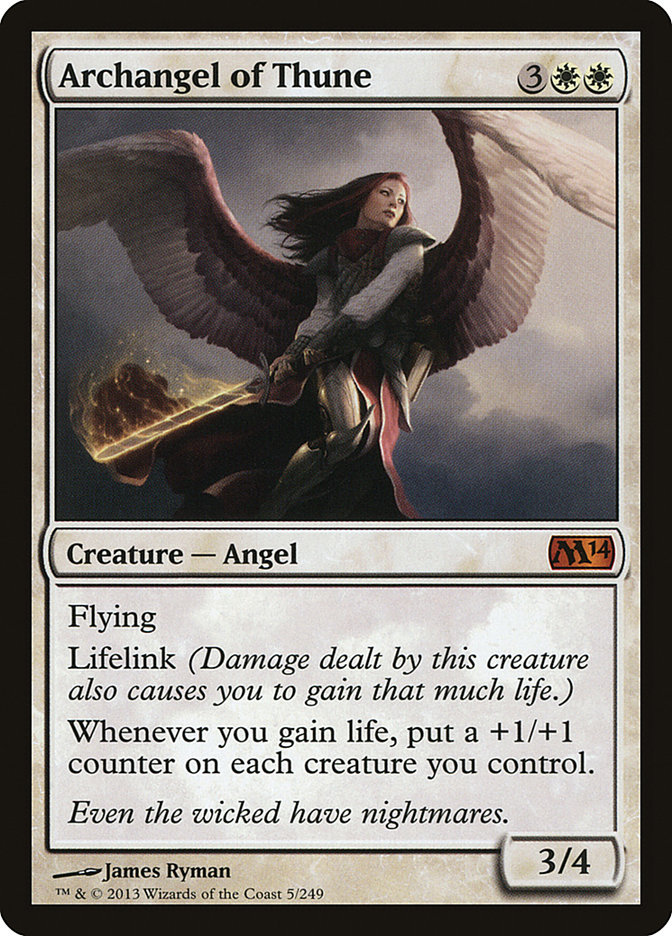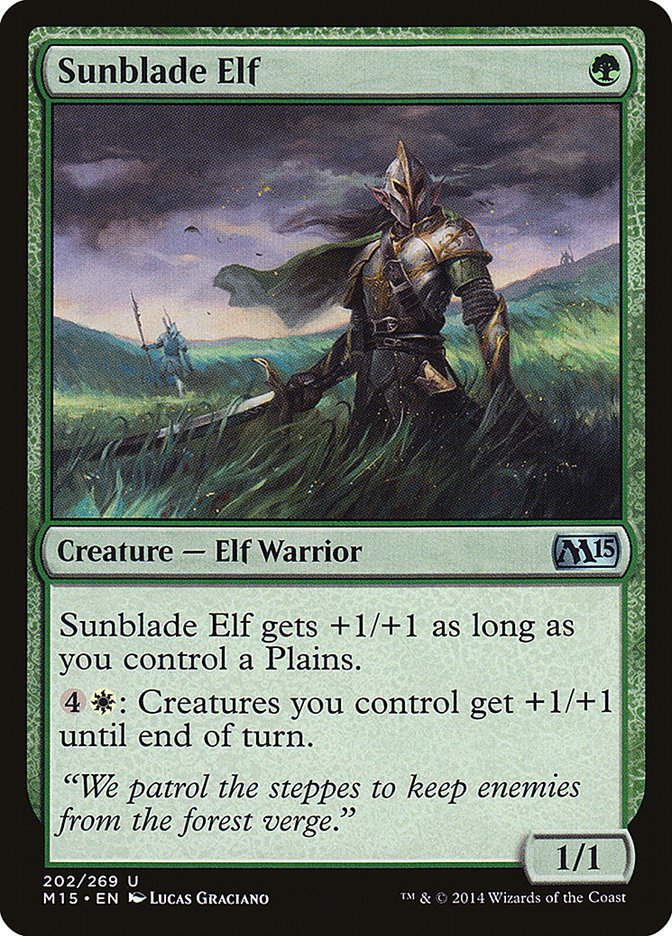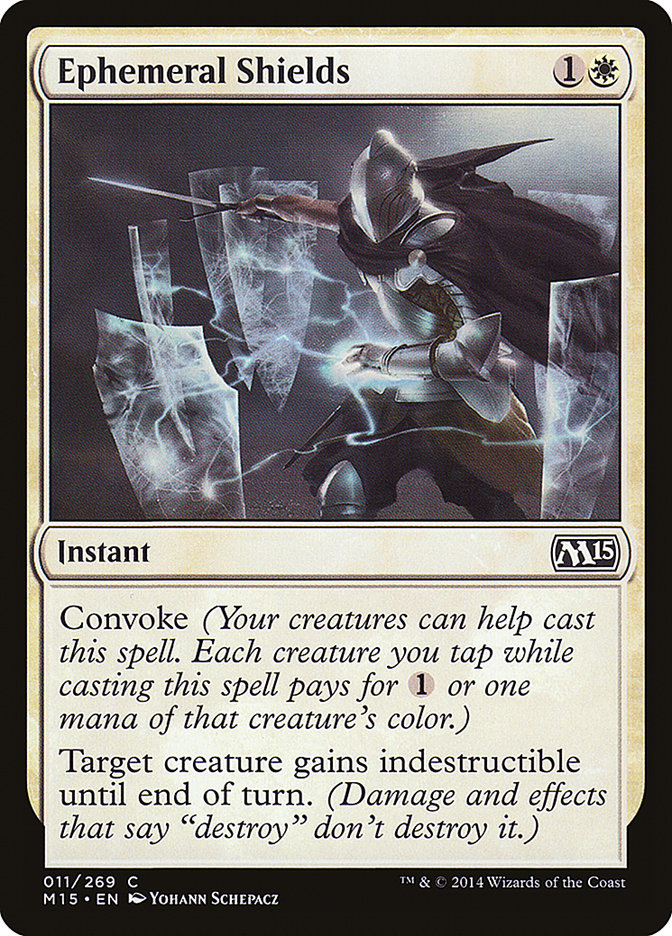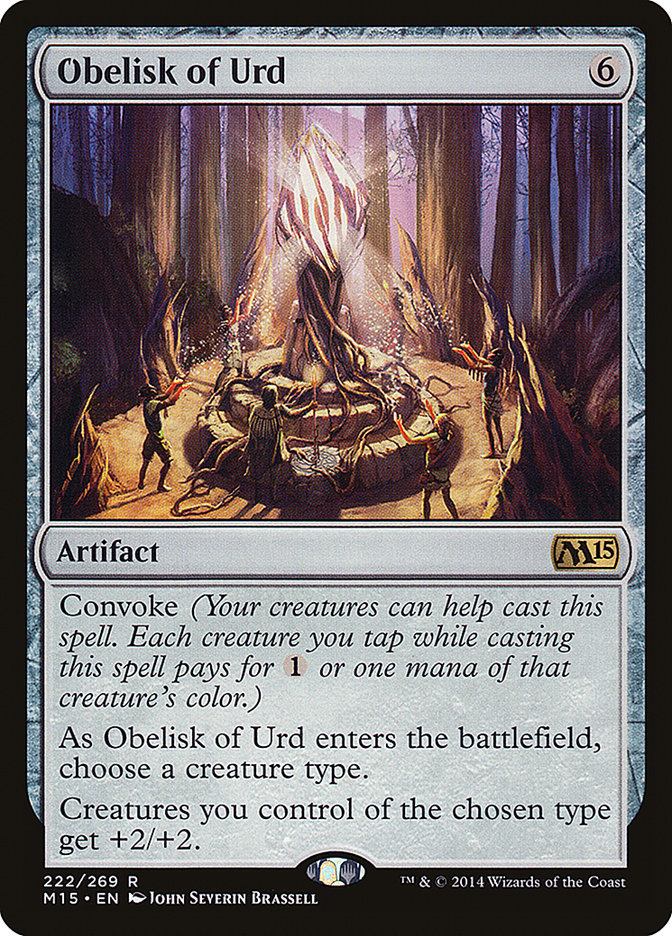The most hotly anticipated core set in years is finally here, and with it, many new cards to throw into the mix of Standard to try to topple the unholy trinity of Black/Blue/Azorius.
Today, I’d like to focus primarily on blue, white, and green strategies. What cards will show up in mainstream decks? What new cards are good against the mainstream decks? What new cards might bring a fringe deck up to the top tiers? We discussed black and red decks Monday, and will be back Friday with brand new archetypes only made possible by M15.
Let’s get this party started right…
Let’s just call it what it is. This Jace is aggressively medium.
So, it doesn’t even bother me that the Living Guildpact doesn’t draw a card. Neither do the good Elspeth, the better Elspeth, or the best Elspeth.
All I want is rate, **** the extra cards.
Okay, so Jace doesn’t draw cards. Drawing cards is pretty great, but so are lots of things. What does he do?
Well, to start with, he sort of gains six or seven life. Maybe eight. That’s something, that’s definitely something.
But does he?
I mean, yeah, he’s got all that loyalty, but that presupposes your opponent is willing to give you all that life to try to kill Jace. What’s Jace even doing that makes your opponent willing to go to such lengths?
Yeah, obviously if you do nothing for three turns, Jace can ultimate and that’s cool. But, like you could attack one time for two to postpone that for two more turns. Heaven forbid there’s a Hero’s Downfall or Banishing Light involved.
When old Jace would come down, if you didn’t do something about it, it would threaten to draw multiple cards next turn. If you didn’t throw everything at it as fast as you could, you might never kill it, as the -1 to your attackers’ power could quickly put him out of reach.
Architect of Thought prevents an average of like three damage a turn, in my experience (and often more). The Living Guildpact? One. One a turn. For as long as that lasts. Which isn’t necessarily that long.
By the way, why are we comparing this Jace to that one? How’s that fair?
Because they are both legal.
But yeah, it’s not fair. The other Jace is a bomb.
So anyway, this Jace’s +1 ability is fine. I mean, that is scry 1.5 (or so), and there are graveyard combos. Sure. That’s not even close to good enough to spend four on considering he’s probably not living that long. You do this and get Downfalled, what have you even got to show for your trouble? You Architect of Thought, and even if they have Downfall, you are a card or two ahead.
This brings us to the minus ability. Bouncing things is very underrated. It was always the most underrated of Jace, the Mind Sculptor’s abilities. Here’s the thing though. Spending three loyalty is a freaking ton. I mean, the only two things this Jace has going for it are a lot of starting loyalty and a fast and deadly ultimate. If you ever use the minus ability, that starting loyalty edge is decimated and you are miles from every going ultimate.
Look, it’s not that the -3 ability is bad. It’s super versatile. It will overperform, I’m sure. It’s just that is not a great rate. That is a lot to spend on a Void Snare. I appreciate the value of the option, but part of what made Jace, the Mind Sculptor’s bounce ability so good was that it was a highly specialized option on a card that had one ability that was so absurdly broken, you were generally going to always be doing it except under extreme conditions (the zero ability). It’s not like we are just super happy to be using Jace, the Living Guildpact’s +1 ability every turn, and all we need is some ability that is relevant the one time in five we dream of anything else.
Okay, so the ultimate, eh? That’s got to be where the power is, right? But with Hero’s Downfall, Detention Sphere, Banishing Light, is that even that likely?
Here’s what I think.
This Jace might be good in blue devotion or whatever. Maybe. I mean, there’s a lot of competition at the four spot. What I think is that Jace, Architect of Thought so completely outclasses this one that there’s little chance of much Living Guildpact over the next three months.
Once the rotation takes place, we could be in a very different world. After all, I wouldn’t be surprised if the Living Guildpact would have been good in block. Drop it and bounce a Courser of Kruphix and you are kind of doing it. The thing is, even there, what have you accomplished? You bounced something only to end up with a planeswalker that doesn’t do anything. Next turn, you can get a little selection (for the turn after that). That’s it. You can’t even bounce anything again.
You better believe I am going to experiment with this guy. I would regardless of what his name was just by virtue of it being a planeswalker.
It’s not promising though.
It would take a very different format this fall in my estimation. For now, my leading theories are that either this Jace was designed to be intentionally not good (since competing with Jace, Architect of Thought is a fool’s errand), or that this guy got last second nerfed into the ground because of Blue Devotion (more likely).
But, okay, let’s suspend our disbelief for a moment. Let’s build a deck with Jace, the Living Guildpact:
Creatures (28)
- 2 Judge's Familiar
- 4 Frostburn Weird
- 4 Cloudfin Raptor
- 4 Nightveil Specter
- 4 Tidebinder Mage
- 4 Thassa, God of the Sea
- 4 Master of Waves
- 2 Hypnotic Siren
Planeswalkers (1)
Lands (25)
Spells (6)

First off, the two Hypnotic Sirens are certainly more likely wrong than right given that the world almost exclusively plays Judge’s Familiar over them. However, I still like experimenting with the mix, seeing if the format has shifted in a control magic friendly enough direction. Judge’s Familiar is just so loose (even if it did win two Pro Tours last year).
As for the seven discretionary spots, I still like Rapid Hybridization, as it just really is what you need and Tidebinder and Thassa are mondo-combos. I never really loved Cyclonic Rift (though a Nykthos does make it more appealing). What I really want to try is Polymorphist’s Jest.
This is one of my favorite cards in M15! It doesn’t promise all that much, but I could actually seeing it being surprisingly well positioned. We’ll see. Suffice to say, I definitely want to look for places to try it because I could easily imagine it just being a blowout. It’s such a great trick for an attacking deck that gets outclassed in the midgame by fatties like Polukranos and Stormbreath Dragon.
Maindeck Domestication is just awesome, and if this were real life, I would play two. Hall of Triumph, on the other hand, is more for science. I want to better understand Master of Waves + Hall of Triumph in Standard, but my guess is that I’d rather have another Domestication.
One Jace, Living Guildpact, one Bident of Thassa?
We’re not going to draw it if we play zero, are we?
I gotta be honest, though. Jace just looks so much worse than Bident. Hell, it looks worse than Jace, Architect of Thought in here (seeing as this is a deck, any deck at all).
Cool card! I wouldn’t be surprised if this one ends up having purpose, as this effect is a lot stronger than just bouncing them. Still, if our deck is full of creatures, Polymorphist’s Jest is more appealing (obviously because of the cost). Still, this is one to keep in mind.
For now, it’s a worse Claustrophobia (and really, a worse Domestication), but we’ll see what artifacts are popping this fall (when I bet it becomes a real card).
“The term Jumbo Shrimp has always amazed me. What is a Jumbo Shrimp? I mean, it’s like Military Intelligence – the words don’t go together, man.” -George Carlin
Now, I don’t think this is funny and condemn anyone that does. You’re not going to just use drones to assassinate people without gathering the proper intelligence first. It’s not like Bident of Thassa where you must attack regardless of rhyme or reason. And at the end of the day, that’s a pretty good description of Military Intelligence. It’s not like it’s Bident of Thassa.
You drop a Bident of Thassa and you’re often drawing several extra cards immediately. Even if you don’t draw any immediately, every single creature is a legit threat now. Military Intelligence is harder to trigger at all, forcing you to overcommit against sweepers. Even if you can trigger it, you still need to trigger it again to pay for itself.
Military Intelligence has two things going for it. It’s real cheap, and the creatures don’t have to actually connect. I guess it’s also not a legend, but Bident being a legend doesn’t even really matter since it’s so over the top.
Besides all the extra cards, Bident also has that whole Siren’s Call ability, forcing them to attack. Plus it gives you twice the devotion! Maybe Military Intelligence shows up in blue devotion in three months. More likely though, if the card is good, it is part of some new deck, but it looks more likely to be a limited build around.
Realistically, Blue Devotion is probably not changing all that much. Its strength is going to be most contingent on how it’s positioned in the metagame, how prepared for it people are, and tactical play both with and against it (as it really is a deck with a huge amount of game on both sides). Two of the biggest wildcards in M15 for blue devotion decks are Shivan Reef and Yavimaya Coast.
Ahhhh, painlands. All we need now is damage stacking and interrupts back!
Obviously, there are bunches of tapped dual lands available at the moment, but blue devotion really, really needs to curve out. Playing a tapped land can be devastating, and drawing two is a nightmare. Shivan Reef + Steam Vents + Mana Confluence is an unusual number of untapped dual lands.
Creatures (31)
- 3 Judge's Familiar
- 3 Izzet Staticaster
- 4 Frostburn Weird
- 4 Cloudfin Raptor
- 4 Nightveil Specter
- 4 Tidebinder Mage
- 4 Thassa, God of the Sea
- 4 Master of Waves
- 1 Keranos, God of Storms
Lands (25)
Spells (4)

What red cards are we even supposed to be playing? I mean, it’s devotion to blue we’re after. Playing Mizzium Mortars or other burn spells is that many fewer permanents. Yes, we could replace Rapid Hybridization, but that one turns into a threat a fair bit. It’s not like the burn is that insane.
I guess we might as well try the Izzet Staticaster + Polymorphist’s Jest combo, but that sure does go after the people we already beat. Blue devotion needs tools against control decks and would appreciate something to try to gain an edge against black. Adding oodles of painlands to support a two-card combo to kill creatures seems like the wrong way considering we aren’t even trying to deal with their creatures anyway.
Maybe Shivan Reef opens up a more Keranos-centric build. Maybe we just want to sideboard red removal. The more important thing is the manabase. If you happen to stumble upon something red that you fancy, it can be yours for a bit of life.
What about green, though?
Creatures (29)
- 4 Judge's Familiar
- 4 Frostburn Weird
- 4 Cloudfin Raptor
- 4 Nightveil Specter
- 4 Tidebinder Mage
- 4 Thassa, God of the Sea
- 4 Master of Waves
- 1 Hypnotic Siren
Lands (24)
Spells (7)

Wait, that’s it? Where are the green cards?
There’s four Mistcutter Hydra’s in the sideboard. Maybe a Simic Charm or a piece of enchantment removal. I dunno. What do you want from me? What green card are you really looking to maindeck? Master Biomancer?
Ok, if you’re Chording up Master of Waves, I’ll give you that. Let’s be serious though, you’re not. And if you were, you’d need a little bit more extreme of a manabase, maybe some Kiora’s Followers or something, and surely some Temples of Mystery, and all sorts of other fancy pants happy horse shoes.
Blue Control
There’s lots of possible ways to go with blue control. Let’s start with the two biggest existing approaches. First, the minimalist, clean, straightforward U/W Control:
Planeswalkers (4)
Lands (26)
Spells (30)

Jace’s Ingenuity is a little underrated at the moment. Opportunity is a stronger card in the abstract, but Elspeth, Planar Cleansing, and Aetherling all cost six. U/W generally doesn’t have anything else that costs five mana. Consequently, five-cost spells are particularly attractive.
Besides, it’s not like we were playing Opportunity over Divination, and Opportunity is definitely the better card there. Converting one or two Divinations into Jace’s Ingenuity might actually be a slight power upgrade if we can get away with it.
Besides, I like playing as much card draw as we can get away with here since this is basically a 45-card deck with a lot of filler. Getting to the good stuff more is a good time.
While this list is on the Planar Cleansing side rather than the Detention Sphere side, both still seem valid. I just think Jace’s Ingenuity helps the Planar Cleansing approach more, while Reclamation Sage makes me want to play Detention Sphere less.
One card I’m skeptical of but want to try is:
In theory, this could be a pretty healthy chunk of lifegain. In reality, I’m not sold on a seven-drop anti-aggro/burn card, plus it’s not like it’s even that much life. It kind of reads like gain 20, but is probably closer to 10 or 12 (if you live that long). What would be kind of sweet is using it in a deck that can actually bounce it. Jace, the Living Guildpact, for instance, could get extra utility out of being able to run it back (basically sealing the deal against a red deck).
On the lifegain front, we might also consider Soul of Theros:
Soul of Theros is a huge threat that completely takes over the game if left unchecked. Even if it does get dealt with, it can provide a pretty big added punch to Brimaz, Elspeth Tokens, or whatever other random bodies you play. The problem, of course, is that it shares a cost with Elspeth, Sun’s Champion, one of the most powerful cards in the format. Additionally, it scales better in creature-heavy decks, which most control decks aren’t (at the moment).
With how much Hero’s Downfall/Ultimate Price/Rapid Hybridization stuff there is going around at the moment, I think this is more for white midrange creature decks (or white devotion). However, if U/W Control starts to look more like that, the card’s power is high enough to keep me interested.
For instance:
Creatures (15)
- 4 Precinct Captain
- 2 Prognostic Sphinx
- 3 Brimaz, King of Oreskos
- 2 Soul of Theros
- 4 Dauntless River Marshal
Planeswalkers (6)
Lands (27)
Spells (12)

This is a very speculative list, but I could imagine a world where we wanted to be positioned aggressively but slightly bigger than most of the other midrange decks. I’m not at all sure of Dauntless River Marshal, but it is a three-power two-drop with a very relevant ability.
There are a number of ways we could go with such a deck. Nykthos, Shrine to Nyx could help power a white devotion theme. Angel of Serenity is still legal, albeit dubiously positioned. Instead, I’d rather just Nykthos out more Elspeth and more Soul of Theros. Alternatively, we could adopt Ephara, God of Polis and go even further towards creatures. Quickling has flash which could be combined with Ephara to set up the double trigger.
The other popular approach to control over the past year has been to splash (or fully embrace) black. Esper can sometimes be more consistent than U/W with the full twelve temples to support spot removal (possibly just in the sideboard). Blood Baron of Vizkopa and Thoughtseize are also popular in the “lite-black” style. Alternatively, we can fully embrace darkness (and the mana risks associated with it) in order to pick up Hero’s Downfall, and now Liliana Vess.
First, here’s a relatively light dosage of black:
Creatures (3)
Planeswalkers (7)
Lands (27)
Spells (23)

Thoughtseize improves the strength of expensive victory conditions like Blood Baron, Aetherling, and Elspeth, Sun’s Champion. The more tapped lands and three-color-esque you go, the harder it becomes to rely on three-mana permission. Dissipate obviously has uses against Chandra’s Phoenix, the Avatars, and more, but so does Syncopate. Dissolve is just a stronger Magic card, and I would generally try to stick with it.
Wait a minute. Where are the M15 cards? What is this?
Well, Esper with a light black splash doesn’t really gain much. What do you want? To add Caves of Koilos? Godless Shrine is better. Of course, we can’t even really tune this deck until we better know what the rest of the field is looking like.
If you just want to power some M15 into your Esper deck, Liliana Vess is a very respectable Walker that is generally underrated because of her cost.
Creatures (1)
Planeswalkers (9)
Lands (27)
Spells (23)

This list just looks too slow to me. I mean, maybe it’s fine, but I know I want to err on the side of being fast, lean, low to the ground, coming out of the gates this time around. People are going to play so many more painlands than they should, and manabases are going to be greedier than is wise. As a result, aggressive, efficient decks are going to do well, and I want to be good against them. Besides, this is an eight set Standard, and the larger the card pool, the lower the average converted mana cost of cards people actually play.
I do like Hero’s Downfall though. I guess I just fantasize about Sphinx’s Revelation in Mono-Black. This is why I appreciate Underworld Connections, I suppose.
However, there are other ways of speeding such a deck up, if we’re willing to think outside the box. For instance, what if we cut white?
Creatures (1)
Planeswalkers (6)
Lands (26)
Spells (27)

Now we’re starting to get to something interesting!
Our mana is great, we’ve got plenty of two-drops, and we’re not short on card advantage. Jace’s Ingenuity and Opportunity are not going to totally make up for Sphinx’s Revelation, but Liliana will help. Perilous Vault is miles from a Supreme Verdict, but between it, Bile Blight, and Silence the Believers, we do have some options for hitting multiple threats. It even helps shore up U/B’s weakness to enchantments!
I wonder… I mean, it’s probably terrible, but what if…
Creatures (1)
Planeswalkers (4)
Lands (26)
Spells (29)
- 3 Dissipate
- 3 Opportunity
- 1 Annul
- 4 Syncopate
- 2 Negate
- 1 Essence Scatter
- 2 Domestication
- 3 Jace's Ingenuity
- 1 Ratchet Bomb
- 1 Cyclonic Rift
- 4 Dissolve
- 1 Aetherspouts
- 3 Perilous Vault
Sideboard

Now, there’s a list you don’t see every day!
What could possibly bring back the days of Draw-Go?
Realistically, if we’re going to take a serious crack at this deck, we’ve got some serious challenges in front of us. For instance, how do we beat turn 2 Pack Rat on the play? What about Thoughtseize setting up Underworld Connections? Mistcutter Hydra isn’t exactly a picnic, though it is hit by a Ratchet Bomb for 1.
I just know nobody builds true Draw-Go decks anymore, and gosh darn it, if it was good, we’d really catch people unprepared.
Nowadays, tap-out has such a natural advantage with the types of cards that get printed. There are just so many different types of four, five, six, and seven-mana bombs that are so worth tapping out for. This new cycle of souls of the planes, all these planeswalkers, all these bombs like Aetherling, Stormbreath Dragon, Polukranos, Angel of Serenity, Rakdos’s Return, and more.
Speaking of the souls of the planes, one of the souls I am most interested in working with is Soul of Ravnica:
Accidentally spoiled early by a WotC promo video, the true activation cost of Soul of Ravnica was initially wrongfully reported to be 3UU rather than 5UU. That card would be absolutely bananas. However, WotC then revealed the true card to cut their losses and prevent more misinformation from spreading. As is so often the case when a card is spoiled wrong and the true version weaker, people have a tendency to underestimate it. Anchoring is a real trap!
So, first off, untapping with Sphinx of Magosi is slightly better than untapping with Soul of Ravnica. Soul of Ravnica is 5UU for 2.5 cards on the average, and while it has a higher upside, it asks a non-zero amount from you. Being able to draw just one extra card and use your mana for something else, that’s a good thing. Besides, Sphinx of Magosi grew!
However, there are two important differences here. First, Sphinx of Magosi was legal during an era dominated by Bloodbraid Elf into Terminate and Maelstrom Pulse, not to mention Path to Exile. A removal spell on your Sphinx and you were much the worse of it.
Nowadays, the most popular removal spells that kill a 6/6 blue flier are:
Detention Sphere can detain the Soul of Ravnica for a while, but Detention is not forever these days. As for the rest of these, you are effectively getting a draw two or draw three Flashback without spending a card. That is like a Jace’s Ingenuity or an Opportunity (since those cost a card, making them +2 and +3 respectively). Yes, you are spending seven mana, but you are getting this on top of your Sphinx of Magosi!
Sphinx of Magosi also suffered from Mana Leak being the disruption card of choice of that era. Today’s Standard format is defined by Thoughtseize. While Mana Leak was backbreaking on a Sphinx of Magosi, Thoughtseize on a Soul of Ravnica elicits a grin, a chuckle, a knowing smile.
Yeah, not every deck is going to be in the market for a six-cost threat with a seven mana Flashback. Not every deck is going to be in the market for Mystical Teachings either. However, even if they don’t exist yet, they will.
Now, there is some hesitation in me. This is the most expensive Avatar, and while it may be good, it might end up outclassed by some of the others. The black one looks amazing to me, and the red one and the white one both look potentially exciting. The blue one has some real strengths, but it also has some serious competition. Aetherling costs six, and what blue control deck isn’t casting Elspeth?
What I can say about this cycle is that it looks tailor-made to fight the good fight against Thoughtseize/Hero’s Downfall. It is incomprehensible to imagine that WotC wasn’t aiming at those two with this entire cycle, and once they know, actually know, what it is they need to make cards to beat, they are very effective at it.
Remember, they have to design cards a year in advance. If a format is easy enough for them to figure it out completely, the real world will solve it in an instant. So, they have to plan for a lot of possible futures. This cycle was clearly designed after they had played enough Theros block to realize that Thoughtseize/Hero’s Downfall was likely to be a little strong. And if the real world had turned out to disprove this, fine, people would play the Avatars less. No harm, no foul.
So, I don’t know which ones will prove the best or where they will go yet, but I would be shocked if the Avatars as a group didn’t get there. They aren’t aiming to define the format like Titans did, but they are powerful and extra strong against black decks.
Here’s an attempt to utilize Soul of Ravnica:
Creatures (14)
Planeswalkers (8)
Lands (26)
Spells (12)
Sideboard

A little bit ramp, a little bit control, this list aspires to just throw good cards at our opponents and try to overpower them. We’re actually not that bad at blocking small creatures, and larger threats can often be dealt with by Supreme Verdict, Elspeth, Detention Sphere, or Banishing Light. Where this list really shines is in a resource war, a battle of attrition. We have some really powerful card draw, Planeswalkers that are all inherent card advantage, answers to Underworld Connections, and Prognostic Sphinx to close with (along with creatures to protect it from Devour Flesh).
Part of the challenge of building around Soul of Ravnica is making sure you have the necessary variety of colored permanents. Sylvan Caryatid and Detention Sphere are perfect for obvious reasons. While any permanent can help, permanents that have a tendency to stay in play a long time are optimal.
While Soul of Ravnica naturally wants to be in a three-color deck, four and five are totally on the table. What red-blooded planeswalker doesn’t dream of Chromanticore + Soul of Ravnica?
Amusingly, we could even go the other way, so long as we have access to hybrid cards. For instance:
Creatures (30)
- 4 Judge's Familiar
- 4 Frostburn Weird
- 4 Cloudfin Raptor
- 4 Nightveil Specter
- 4 Tidebinder Mage
- 4 Thassa, God of the Sea
- 4 Master of Waves
- 2 Soul of Ravnica
Lands (26)
Spells (4)

This is probably too cute, but it is a fun exercise that reminds us to stretch our minds, to escape mental constructs like “Soul of Ravnica needs to be played in a multi-color deck.”
I’d like to table control for the time being, but we’ll have more speculative control approaches to look at Friday. Before we move past Bant, however, I’d like to run a Bant combo deck by you. It’s probably atrocious in its current form, but it has multiple three-card instant win combos and a powerful new tutor to pull it all together.
Creatures (29)
- 1 Scavenging Ooze
- 4 Fathom Mage
- 4 Vorel of the Hull Clade
- 4 Elvish Mystic
- 4 Archangel of Thune
- 3 Sylvan Caryatid
- 4 Horizon Chimera
- 4 Sage of Hours
- 1 Reclamation Sage
Planeswalkers (4)
Lands (23)
Spells (4)

Combo #1:
Ajani is excellent for setting up either combo, and often will come down and Impulse for the missing piece. Let’s say you already had a Vorel of the Hull Clade in play. Untap and drop Sage of Hours, put three counters on it, double the number of counters, then take an extra turn and repeat!
Combo #2:
This one is a little tricky to set up sometimes, since you need two fragile four-drops to live, and a five-drop that often takes over games anyway. However, one of the four-drops has flash, and Chord of Calling is the whole reason this deck might actually come to fruition so that’s a lot of instant speed maneuvering.
Besides, it’s not like you need this whole combo for the pieces to do powerful things. Archangel of Thune can single-handedly take over a game, and if you ever Chord for two and get Scavenging Ooze, you are just crushing. Fathom Mage can actually just go off itself with lots of other cards. Every time Ajani targets it, you get to draw three more cards. Vorel of the Hull Clade activations get crazy fast!
Horizon Chimera? Well, at least it blocks Nightveil Specters…
Chord of Calling and Ajani, Mentor of Heroes give us a pretty respectable amount of selection when looking for our combos. With enough time, we are looking good. Realistically though, we don’t have much defense, our combos are relatively slow and disruptable, and we spend so many slots on mana and combo cards that our deck really doesn’t do that much. Most likely, we are going to want to focus on one combo or the other, possibly having the other available in small numbers.
White Creature Decks
White creature decks are so close to being good and are already at least fine. It’s possible that just the right tweak, the right upgrade could go a long way. Let’s start with the archetypal white creature deck, G/W:
Creatures (26)
- 4 Scavenging Ooze
- 4 Loxodon Smiter
- 4 Voice of Resurgence
- 4 Archangel of Thune
- 4 Fleecemane Lion
- 4 Brimaz, King of Oreskos
- 2 Sunblade Elf
Planeswalkers (1)
Lands (25)
Spells (8)

This isn’t exactly the archetypal G/W deck, but it’s a start. This midrange sort of good stuff plan probably doesn’t work without removal, but I generally like experimenting with various configurations of powerful proactive cards. The problem is, if we don’t do something to prevent it, we are going to be out-tempoed by blue devotion, while folding to removal + card draw out of control and black decks. We get to make good use of Spirit Bonds (which is still near the top of my list of cards I’m most interested in working with), but we aren’t making as good of use of new cards as we could be. For instance, take Sunblade Elf:
Sunblade Elf is fine here, maybe even good, but it’s going to perform better in more aggressive builds, such as:
Creatures (23)
- 4 Loxodon Smiter
- 4 Experiment One
- 4 Voice of Resurgence
- 3 Fleecemane Lion
- 4 Brimaz, King of Oreskos
- 4 Sunblade Elf
Lands (22)
Spells (15)

Here, Sunblade Elf is a two-power one-drop that can actually have a major impact on the board in the late-game. Soldier of the Pantheon was always fine, but Sunblade Elf seems like a pretty healthy upgrade. I particularly like Sunblade Elf + Brimaz for token-pumping-goodness.
Sunblade Elf is also a natural fit into fast Naya decks:
Creatures (28)
- 1 Dryad Militant
- 4 Precinct Captain
- 4 Ghor-Clan Rampager
- 3 Voice of Resurgence
- 4 Fleecemane Lion
- 4 Soldier of the Pantheon
- 4 Brimaz, King of Oreskos
- 4 Sunblade Elf
Planeswalkers (2)
Lands (22)
Spells (8)

It’s funny that Battlefield Forge gets printed, and we don’t even use it, but this list is descended from the Pat Cox school of fast Naya, minimizing red, so twelve sources is plenty. Besides, we need Plains anyway for Sunblade Elf to be at its best.
I love Brave the Elements, and it’s one of the reasons to play this deck, but I also love Ephemeral Shields. Brave the Elements is already so good at alpha-strikes and protecting creatures from spot removal, so the added dimension of indestructibility to fighting Supreme Verdict, even when you’re tapped out, well that’s just awesome.
Seriously, this card is just so perfect with Brimaz. That is literally the card you’d most want to protect, and his Vigilance makes it easy to always have Ephemeral Shields up. He even makes a vigilance token you can tap for the second mana to make sure he is single-handedly paying the bills!
Ephemeral Shields has me really excited to work with white aggro, as it is a deceptively high impact tempo play that will often be a zero-cost Time Walk. It might be merely good, but it is definitely in the range of possibilities that this turns out to be a Shining Shoal-esque combat trick (like Brave the Elements) that helps define the archetype.
I really want to look at a couple more white decks, but first, here’s a big Naya deck, by request:
Creatures (22)
- 4 Voice of Resurgence
- 3 Polukranos, World Eater
- 4 Stormbreath Dragon
- 4 Fleecemane Lion
- 2 Brimaz, King of Oreskos
- 4 Courser of Kruphix
- 1 Soul of Shandalar
Planeswalkers (7)
Lands (26)
Spells (5)

Soul of Shandalar is a hot new addition to Jund Monsters but is less special in Naya, given the competition with Elspeth for the six-spot. Once again, Battlefield Forge isn’t a clean fit, so we are left with a shortage of new awesomeness from M15. I guess I just wanted to experiment with a version containing no acceleration. When we grow up, we are going to start going to bed earlier, eating more fiber, and playing Elvish Mystic and Sylvan Caryatid so that we can actually cast our spells.
Okay, back to the white decks, because those are the right decks, because those are the tight decks!
Creatures (26)
- 4 Dryad Militant
- 4 Precinct Captain
- 4 Boros Elite
- 4 Daring Skyjek
- 2 Banisher Priest
- 4 Soldier of the Pantheon
- 4 Brimaz, King of Oreskos
Lands (23)
Spells (11)

Obelisk of Urd takes advantage of just how many of the creatures we’re playing. Why use it instead of Dictate of Heliod? It’s tough to count on Dictate of Heliod with just 23 lands. We might be able to get away with it, but Dictate of Heliod is actually pretty easy to drop on turn 3 or 4. In fact, if we added Raise the Alarm, we could easily justify another Obelisk of Urd or two.
The rest of the deck is just the high tempo combat tricks and some random one-ofs to see which do for us what we want. There are a lot of passable options that each give diminishing returns, so I could see mono-white easily ending up with three to seven one-ofs.
Raise the Alarm features prominently in our last list of the day, R/W Tokens:
Creatures (11)
Planeswalkers (4)
Lands (27)
Spells (18)

Between Spear of Heliod, Hall of Triumph, Dictate of Heliod, and Obelisk of Urd (if we want it), we are not short on good anthems. Purphoros and Soul of Theros are kind of anthems themselves.
As for token-making, we really needed another two-drop, as we have plenty of good options at three, four, five, and six. Raise the Alarm fits in quite nicely.
So, what’s the catch? People play Bile Blight and Supreme Verdict, but also people play a lot of fast and deadly threats, like Thassa. This token list goes medium big but takes a while to get there. Besides, if people play a lot of artifact and enchantment removal, our stuff starts looking less sweet. Still, there’s nothing that inherently kills this approach even if this is exactly the type of deck that Sphinx’s Revelation tends to push out of the format.
Alright, I’m out for today, but I’ll be back Friday with non-stop new brews. Here are some of the cards I’ll be building around. If there are others you want to see, be sure to let me know. See you then!

